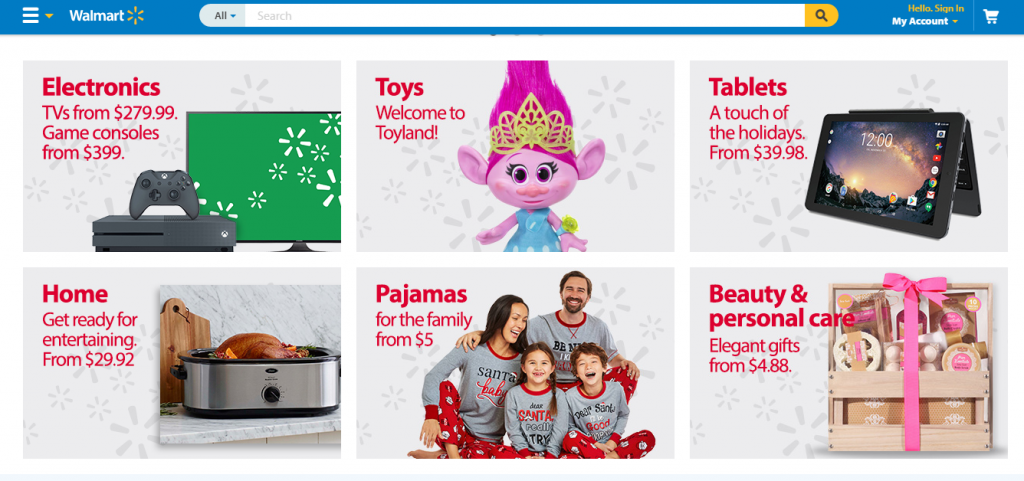Here’s a sobering statistic, around eight out of ten online stores fail within the first 24 months of going live. So why then, when the eCommerce market is growing at around 13% each year, do so many new online stores fail? It boils down to this: In a highly competitive market, the basics can make or break your business.
No matter what niche your online store is centered around or whether you’re a new or an established business, it is easy to get bogged down by the day-to-day running of your businesses without thinking of the bigger picture.
Which is why I took to the internet and asked the experts, in search of the top six reasons why eCommerce businesses fail. Here are the top six mistakes others have made and some insights into how you can prevent it from happening to your store.
Let the countdown begin…
6: Lack of Product Focus
The first mistake so many fledgling online merchants make starts at the product planning stage. Before launching, they are tempted into loading their online store with as many types of products possible — because the more products you have, the more you sell…right?
Unfortunately not. Dropshipping everything and anything from shoes to cell phone covers will make a store look untrustworthy in the eyes of a consumer. Doing this leaves stores without an identity customers can relate to, which means stores don’t become an authority in any direction. Without the expert knowledge to help customers within the niche they are buying and being left with a diluted brand without any strong direction, a store will not get the sales it needs to survive long term.
Brayola is an example of a highly-focused online store doing it right. Picking their niche and becoming an expert and authority within it.
The trick to avoiding this business-closing pitfall is to choose a niche, whether it is clothing or phone accessories or books, and become an authority within that niche. In other words, if you’re dropshipping from Aliexpress, instead of making your store a free for all, focus on one specific area such as smartphone accessories or DIY and become an authority in that niche that shoppers can trust.
5: Not Providing Service
Patience is key to success, and with patience, comes planning ahead. A good business takes time to grow and long-term strategies are essential to eCommerce success. Take the time to lay out your business plan, marketing plans and sell-flow and adjust your investment accordingly. One of the best ways to think ahead in your business planning is not about inventory, cash-flow, driving sales or marketing — all of which are very important, but it is in fact about thinking of your online store as a service provider. That means that you should be investing in long-term strategies aimed at providing the best customer service and products to your shoppers over an extended period of time.
Just look at Traffic Shoe, one of our merchants doing it right, who is winning with customer services. Not only are they available 24 hours a day and answer queries promptly, but are a brand that knows its niche well, allowing them to be the authority on anything shoes.
Failing to do this leaves so many online stores without repeat buyers to cover sales during the first quarter slumps when overall shopping is low. Low sales lead to cash-flow issues and ultimately to failure.
4: Underestimating the Competition
You can be sure that there is a store out there selling what you’re selling, no matter what niche you are in. But that is not to say you shouldn’t go for it; competition can actually be healthy for your business. The problem comes in when new online stores are trying to break into the market with products that compete with big online retailers. Opting to sell mass-market products means you’re competing with so many more other stores and chances are that when competing with trusted big name retailers, you’re not going to come out on top.
Instead, avoid competing with giants such as Walmart and Best Buy with regards to name brand electronics and find your own niche. Find products that are in essence, original, and find ways to offer valued, personal service that helps you stand out from your competition.
3: Bad Cash Flow
I get it, most businesses starting out are on a limited budget and online stores are not any different. However, it is not the size of your budget that is important, it’s how you manage it that can affect the success of your business. Putting too much spend into stock and not enough spend into marketing, for example, can leave you with a warehouse full of goods with no buyers. The biggest cash-flow tip? Once you have launched, plan your budgets around actual sales revenue rather than projected sales to help maintain a healthy cash-flow.
Don’t be afraid to think outside the box with marketing to bring in more people for your budget. The simplest on-site promotion can help grow your database without overspending. The bigger your database and network, the more people you can connect with through social media or via email campaigns, the more opportunities you have at getting sales and establishing repeat business.
2: An Unappealing Website
There is no sugarcoating it — if your website sucks, you can kiss those sales goodbye. The thing is, your website is your business and without a well thought out, secure, easy-to-use site that talks the language of your target audience, it just won’t make it. With so many platforms –from WP to Shopify– and easy to use apps available to us these days, there is little reason why you can’t afford to make sure your web store is top-notch. This includes the overall shopping experience a user has on your site, the language you use, it’s visual appearance, the speed and the checkout process.
Just look at Inu Inu, a successful online store, who not only create a unique product line, but display it in a language that their target audience can relate to. All while using quality product displays that talk to their demographic, in a simple yet highly effective way.
A simple place to start on improving the overall appeal of your site would be to start with the product photos themselves. Good product displays like the above example help shoppers understand the quality and get a feel for what you’re selling. Using low quality photos that are not clean or focused will probably give the impression that your goods are just not good enough. However, with today’s easy product photo editing tools, improving your product photo quality is easier than ever before.
1: Not Getting Enough Traffic
The number one reason for eCommerce failures is… Traffic. You can have the best website, stock, checkout process and cash-flow planning in place, but if no one is seeing your store, no one is buying from your store. The biggest make-or-break to eCommerce sites is the amount of traffic they are getting. Not just any old traffic, but targeted traffic, and if you are not investing in good traffic driving platforms, you are in real trouble. Old Guys Rules know all about what increased traffic can do for the success and ROIs of an online store.
Social media and AdWords campaigns, SEO good practices, blog content and other leading traffic sources are a must business investment. And you don’t need a huge budget or agency to get you started. Try apps like Traffic Booster for target traffic for as little as $29 per month, free design apps such as Canva to help you plan social campaigns, and follow blogs like this one to get traffic driving and marketing tips from people who have already tried and tested working practices.
The basic key to success is this: Do your research. From product sourcing to marketing planning, research and learn from the big players in your niche. Taking note of how they act, their sales funnel and their customer service approach will help you find your own sweet spot to stand out. Whether it’s your awesome blog content, your personal one-on-one service or your free shipping, look for ways you can offer your shoppers something unique.
If you are a successful online store owner and have some tips of your own, I would love to hear them and do a feature on you. Comment below and I will get in touch.

Nicole is a content writer with over sixteen years experience and flair for storytelling. She runs on a healthy dose of caffeine and enthusiasm. When she's not researching the next content trend or creating business content strategies, she's an avid beachgoer, coffee shop junkie and hangs out on LinkedIn.
Recommended articles
 Facebook Ads for eCommerce: 16 Strategies, Examples & Tips
Facebook Ads for eCommerce: 16 Strategies, Examples & Tips
 How to Build a Winning eCommerce Ads Strategy
How to Build a Winning eCommerce Ads Strategy
 Google Ads for eCommerce: Everything You Need to Know
Google Ads for eCommerce: Everything You Need to Know
 10X Your Traffic with PPC Management Software
10X Your Traffic with PPC Management Software
Comments
Powered by Facebook Comments







